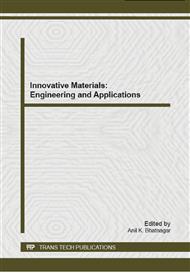p.482
p.489
p.495
p.503
p.509
p.514
p.520
p.524
p.529
Fatigue Behavior of Friction Spot Stir Welding with No-Keyhole of Aluminum Alloy
Abstract:
The fatigue properties of refill friction stir welding joints of 6082-T6 aluminum alloy were completed based on the optimal process parameters. The expression of the fatigue life prediction were obtained in a certain range. The microstructure and fatigue fracture appearance of welding joints were observed and analyzed. And the microhardness of the joints were tested. The results showed that the fatigue crack initiated from the root of the joints between the lower and upper plate, that is the junction of HAZ and TMAZ, and then propagated to fracture along the boundary between the HAZ and the TMAZ. Strengthening phase which was formed of trace elements significantly affected the fatigue properties of spot welding joints. The fatigue life of spot welding joints along with stress intensity factors decrease showed an increasing trend. Fatigue life of spot welding joints emerge an increasing trend along with decreases of the load.
Info:
Periodical:
Pages:
509-513
Citation:
Online since:
October 2014
Authors:
Price:
Сopyright:
© 2014 Trans Tech Publications Ltd. All Rights Reserved
Share:
Citation:


